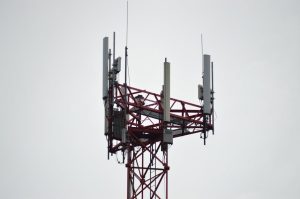
How Satellites Monitor Climate Change and Environmental Shifts is a crucial aspect of understanding the health of our planet. Climate change and environmental shifts are two of the most pressing issues of our time, and satellites have become essential tools in monitoring these changes. With the ability to collect data on a global scale, satellites provide valuable insights into the workings of Earth’s systems, allowing us to better understand the impacts of human activities on the environment.
Satellites monitor climate change and environmental shifts by using a variety of sensors and instruments to collect data on key indicators such as sea level rise, ice sheet melting, and changes in ocean currents and temperature. This data is then used to create detailed maps and models of the Earth’s systems, which can be used to predict future changes and identify areas that are most vulnerable to the impacts of climate change.
Types of Satellites Used for Climate Change and Environmental Shifts Monitoring
There are several types of satellites that are used to monitor climate change and environmental shifts, including weather satellites, Earth observation satellites, and remote sensing satellites. Weather satellites are used to collect data on atmospheric conditions, such as temperature, humidity, and cloud cover, while Earth observation satellites are used to collect data on the Earth’s surface and atmosphere. Remote sensing satellites use a variety of sensors to collect data on the Earth’s surface, including multispectral and hyperspectral sensors, radar sensors, and lidar sensors.
Applications of Satellite Data in Climate Change and Environmental Shifts Monitoring
Satellite data has a wide range of applications in climate change and environmental shifts monitoring, including tracking changes in sea level, monitoring ice sheet melting, and predicting weather patterns. Satellite data is also used to monitor deforestation, track changes in ocean currents and temperature, and predict the spread of diseases. Additionally, satellite data is used to monitor air and water quality, track changes in land use, and predict the impacts of natural disasters such as hurricanes and wildfires.
Benefits and Limitations of Satellite Monitoring
The use of satellites to monitor climate change and environmental shifts has several benefits, including the ability to collect data on a global scale, the ability to collect data in real-time, and the ability to monitor areas that are inaccessible or difficult to reach. However, there are also some limitations to satellite monitoring, including the cost of launching and maintaining satellites, the limited resolution of satellite data, and the potential for errors in data collection and analysis.
In conclusion, How Satellites Monitor Climate Change and Environmental Shifts is a vital component of understanding the health of our planet. With the ability to collect data on a global scale, satellites provide valuable insights into the workings of Earth’s systems, allowing us to better understand the impacts of human activities on the environment. As the use of satellites for climate change and environmental shifts monitoring continues to evolve, it is likely that we will see even more innovative applications of satellite data in the future.
